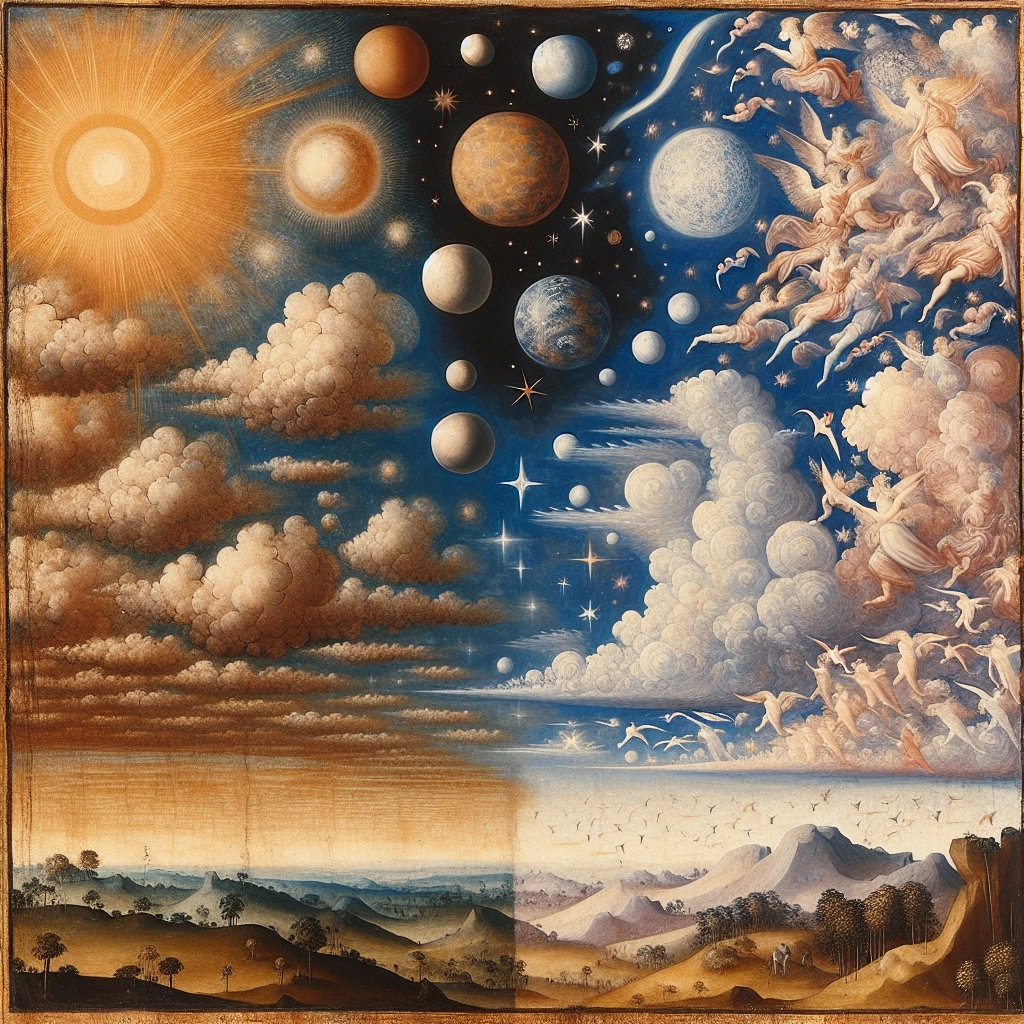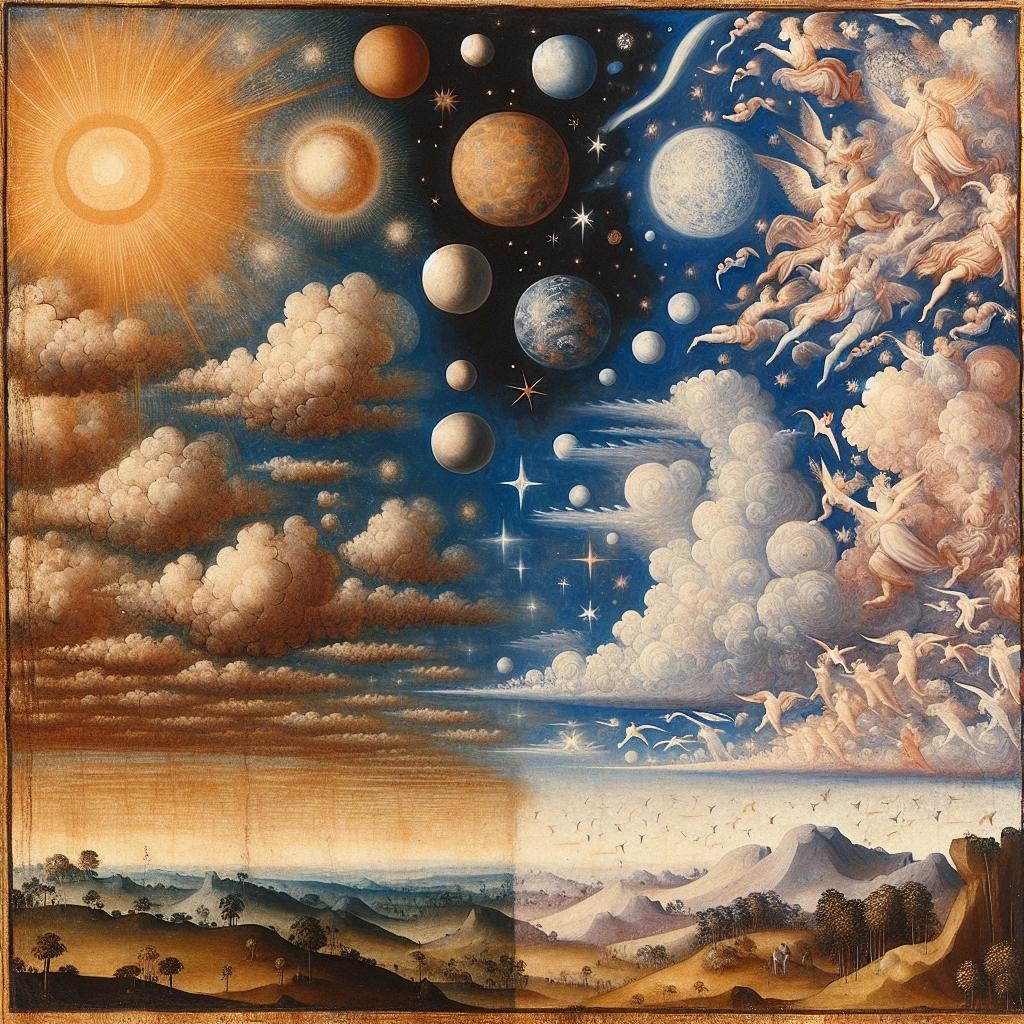The Skys Blue Hue: Unraveling the Mystery and Exploring Other Worlds
 Quantum Cyber Solutions
Quantum Cyber Solutions

Published on
Friday, May 29, 2020
The Skys Blue Hue: Unraveling the Mystery and Exploring Other Worlds
========================================================================
Authors

Name
Eric deQuevedo 😄
Twitter
🌌 The Eternal Question: Why Is the Sky Blue? 🌌
Look up on a clear, sunny day, and you'll be greeted by a vast expanse of blue stretching as far as the eye can see. The sky's mesmerizing blue color has captivated human curiosity for centuries, prompting the age-old question: "Why is the sky blue?" In this blog post, we'll dive into the fascinating science behind this phenomenon and unravel the mystery once and for all. Plus, we'll take a journey to other planets to see what their skies look like!
☀️ It All Starts with Sunlight ☀️
To understand why the sky is blue, we first need to talk about sunlight. Sunlight may appear white to our eyes, but it actually consists of a spectrum of colors, each with its own wavelength. These colors are:
- Red
- Orange
- Yellow
- Green
- Blue
- Indigo
- Violet
When sunlight enters Earth's atmosphere, it encounters tiny molecules of air, water, and dust. This is where the magic happens!
🌈 The Secret Behind the Blue: Rayleigh Scattering 🌈
The key to the sky's blue color lies in a phenomenon called Rayleigh scattering, named after the British physicist Lord Rayleigh. Here's how it works:
As sunlight hits the Earth's atmosphere, it collides with the tiny molecules present in the air.
These molecules are much smaller than the wavelengths of visible light, so they scatter the light in all directions.
However, not all colors are scattered equally. Shorter wavelengths (like blue and violet) are scattered more strongly than longer wavelengths (like red and orange).
As a result, the blue and violet light is scattered more frequently, flooding the sky with a blue hue.
But wait, if violet light is scattered even more than blue, shouldn't the sky be violet? The answer lies in how our eyes perceive color. Our eyes are more sensitive to blue light than violet, so we see the sky as blue rather than violet.
🌅 The Ever-Changing Canvas of the Sky 🌅
The intensity and shade of blue in the sky can vary depending on various factors, such as:
Time of Day: At sunrise and sunset, the sun's rays travel through more of the Earth's atmosphere, scattering more red and orange light, resulting in stunning pink and red hues.
Altitude: At higher altitudes, the atmosphere is thinner, so there are fewer molecules to scatter the light. This leads to a darker, more intense blue sky.
Pollution: Dust, smoke, and other pollutants in the air can scatter light differently, affecting the sky's color. In heavily polluted areas, the sky may appear gray or hazy.
🌌 Skies on Other Planets 🌌
What would the sky look like if you were standing on another planet? Let's explore!
🌕 The Moon
- Sky Color: Black
- Reason: The Moon has no atmosphere to scatter sunlight, so the sky appears black, even during the day.
🔴 Mars
- Sky Color: Butterscotch to Orange
- Reason: Mars has a thin atmosphere filled with fine dust particles that scatter sunlight differently than Earth's atmosphere. The dust particles give the Martian sky a reddish or butterscotch hue.
🌞 Venus
- Sky Color: Yellowish
- Reason: Venus has a thick atmosphere made mostly of carbon dioxide with clouds of sulfuric acid. This dense atmosphere scatters light in a way that makes the sky appear yellowish.
🌍 Titan (Moon of Saturn)
- Sky Color: Orange
- Reason: Titan's thick atmosphere is rich in nitrogen and methane, which scatters sunlight and creates a hazy, orange-colored sky.
🔵 Neptune
- Sky Color: Blue
- Reason: Neptune's atmosphere contains hydrogen, helium, and methane. The methane absorbs red light and scatters blue light, giving the sky a striking blue color, similar to Earth's but for different reasons.
💙 Blue Skies, Smiling at Me 💙
So, the next time someone asks you, "Why is the sky blue?" you can confidently explain the science behind Rayleigh scattering and how it paints our world with a beautiful blue hue. And as you gaze up at the sky, take a moment to appreciate the wonders of nature and the complex interplay of light and molecules that create the stunning canvas above us.
In a world full of uncertainties, the blue sky remains a constant reminder of the beauty and mystery that surrounds us. So, let's celebrate the eternal question and the fascinating answer that lies behind it, as we continue to marvel at the magnificent blue skies smiling down upon us.
And if you're ever pondering the skies on other planets, remember that each one is unique and tells a different story about the planet's atmosphere and environment. The universe is full of wonders waiting to be explored, and the sky is just the beginning!
Discuss on Twitter • View on GitHub
Tags
Sky
Blue
Atmosphere
Light
Scattering
Planets
Astronomy
Questions
Previous Article
Calculus 2: Advanced Concepts and Applications 💻
Next Article
The Floating Phenomenon: Unraveling the Mystery of Why Ice Floats on Water
Subscribe to my newsletter
Read articles from Quantum Cyber Solutions directly inside your inbox. Subscribe to the newsletter, and don't miss out.
Written by
